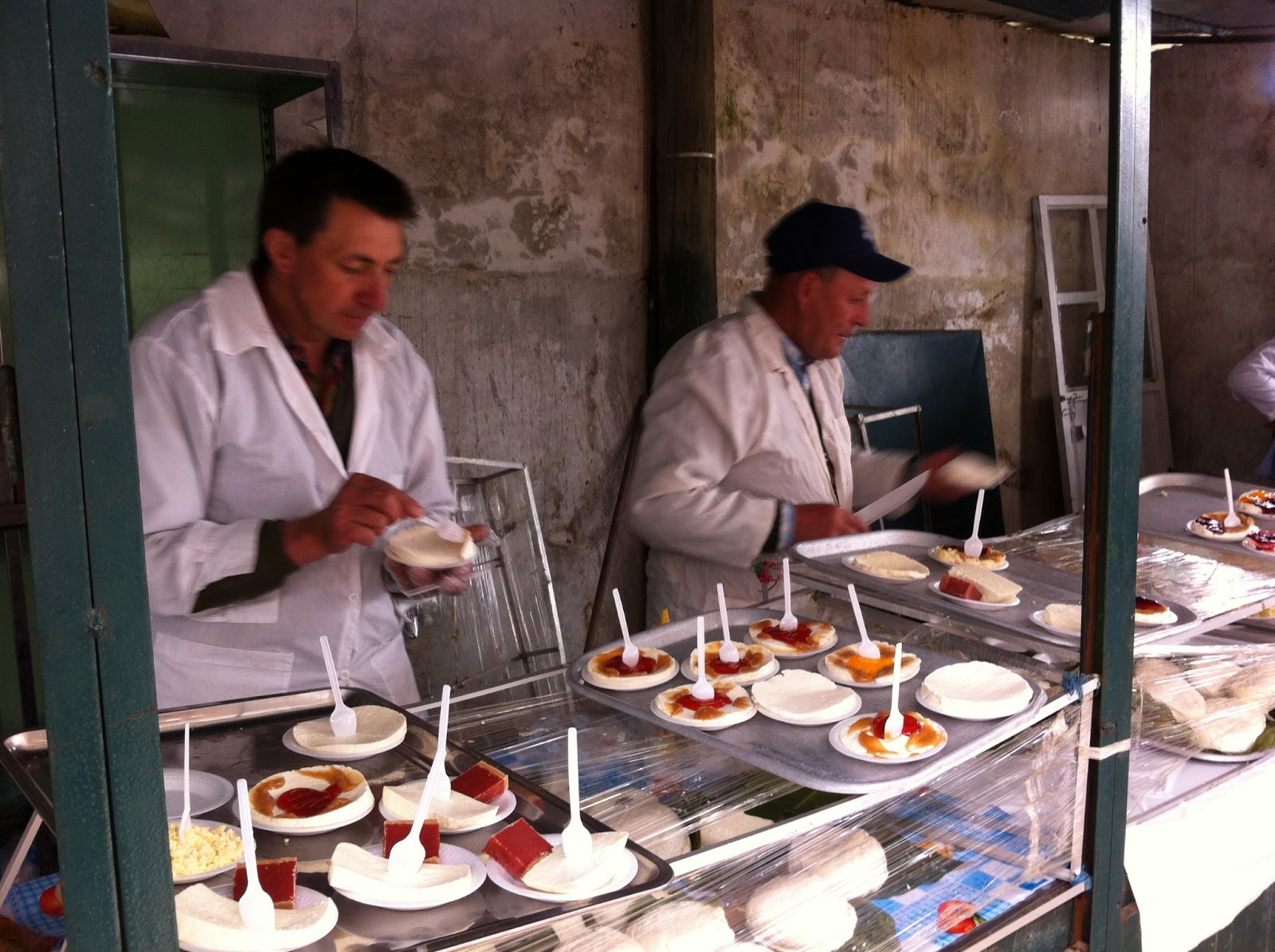What better way to wrap up my time in Colombia than with a visit to origin of my Trader Joe's Colombia Supremo brew. The Coffee Region, or Eje Cafetero, is located in the fertile mountains and valleys south of Medellin, in the Paisa region. Conveniently, I connected with a friend I made volunteering on the Caribbean coast and we met up to explore the region together.
I took an overnight bus to the city of Pereira, a pleasant and non-turistic city to join my Nicole at a home where she was Couchsurfing. Our host and his family were incredibly kind and welcoming to us wandering strangers and treated us like family, sharing every meal and getting to know us. Understanding our interest in the region's claim to fame, Alejandro contacted a family friend that runs a coffee plantation and arranged for us to have a personal tour! Here are some photos of the excursion:
 |
| Baby coffee plants waiting to get in the ground. |
 |
| Workers dumping their days' loot after weighing. They get paid based on that weight. The going rate for sun-up to twilight work is about $11-14, with meals included, generally |
 |
| Not cranberries! The red coat is shelled off in the next step. The beans descend to the lower level of this building through a cleaner and then are suctioned up to a large drying rack and oven. |
 |
| The Jefe of the farm explaining the drying process. |
 |
| My lovely Swiss friend, Nicole, and I enjoying a DELICIOUS meal given to us by the lady of the farm. |
After hanging out with Alejandro for a couple days (one of which we spent soaking in some natural thermal pools!) Nicole and I set out for Salento, a small town known for it's charm, coffee of course, and Colombia's national tree, the towering Wax Palm.
 |
| Which way? |
To see the trees, we embarked on a day hike in the Valley of the Cocora, a 20 minute Jeep ride from town. As we figured out, we had chosen to explore the Coffee Region during the rainy season. As such, I followed the hostel's advice and rented a pair of rubber boots from them for the trek up the mountain.
 |
| All geared out. Hoping REI carries these boots. |
The boot rental was the best choice I made the whole trip. I trudged right on through each menacing mud puddle and stream without having to worry about soggy feet. The first stop on the loop was Acaime, a wildlife preserve dedicated to the area's the array of hummingbirds that call the cloud forest of the Cocora their home.
The cloud forest was exactly what it sounds like...swirling mist among towering trees and unfurling ferns in a Jurassic-era-like setting.
 |
| Hopscotch swinging bridge. |
 |
| The long-awaited Wax Palm! |
After completing the Cocora loop, we caught a ride back with a tour bus of college kids (Thank you Caz) to Salento. Here are a couple of photos from one of our bike rides!
 |
| Herding time |
 |
| Salento is famous for their trout. Mine is covered by their other claim to fame: giant pressed plantains. That's one entire plantain, smooshed and fried. |
 |
| Grafitti. |






















































